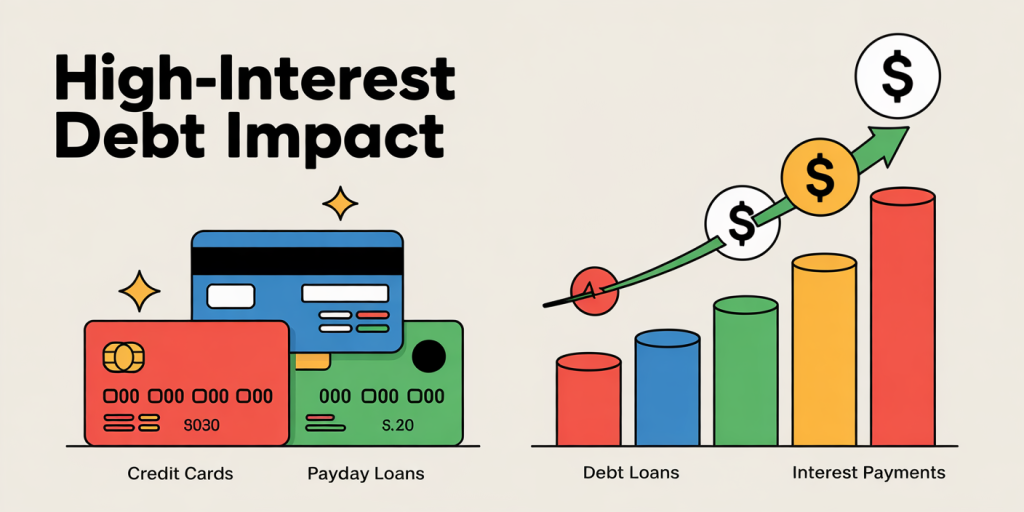Top 7 Personal Finance Mistakes and How to Avoid Them
Managing personal finances effectively is essential for achieving long-term financial stability and independence. However, many people unknowingly commit common errors that hinder their ability to build wealth and meet their financial goals. According to a 2023 survey by the National Endowment for Financial Education, nearly 60% of Americans report feeling anxious about their financial situation, indicating widespread struggles with money management. Understanding the typical pitfalls and adopting practical strategies to avoid them can transform one’s financial outlook. This article explores the top seven personal finance mistakes, illustrating each with real-world examples and providing actionable advice for prevention.

Overlooking the Importance of Budgeting
One of the most fundamental mistakes people make is neglecting to create and maintain a budget. Without a clear picture of income versus expenses, it’s easy to overspend and accumulate debt. For instance, Jennifer, a 29-year-old marketing specialist from Chicago, was surprised to find her credit card balance increasing monthly despite never feeling “extravagant.” A breakdown of her spending revealed frequent small expenses like daily coffee runs and lunch outings adding up to hundreds of dollars each month.
Creating a budget helps track where money goes, identifies unnecessary expenditures, and allocates funds to essential categories such as savings and debt repayment. According to a 2022 Gallup poll, households with a written budget are 20% more likely to save regularly. Budgeting apps like YNAB (You Need A Budget) and Mint provide accessible tools to automate this process. Prioritizing budgeting not only controls spending but also builds discipline essential for long-term financial health.
Accumulating High-Interest Debt
Falling into high-interest debt traps, especially from credit cards and payday loans, is a common yet severe personal finance mistake. High interest rates can quickly escalate the amount owed, making it difficult to pay off the principal. For example, Michael, a 35-year-old teacher, accumulated nearly $15,000 in credit card debt with an average APR of 22%. Despite paying $500 monthly, most payments covered interest, barely reducing the principal.

Avoiding or minimizing high-interest debt requires timely payments and strategic use of credit. A Credit Karma report finds that 30% of Americans carry credit card debt month-to-month, with an average balance of over $6,000. Pay off balances fully each month to avoid interest or consider transferring balances to cards offering 0% introductory APR. Establishing an emergency fund also reduces reliance on credit during unexpected costs. Table 1 compares the impact of various interest rates on a $5,000 balance paid over 12 months.
| Interest Rate | Monthly Payment | Total Interest Paid | Total Amount Repaid |
|---|---|---|---|
| 15% | $438 | $268 | $5,268 |
| 22% | $462 | $538 | $5,538 |
| 30% | $479 | $752 | $5,752 |
Minimizing interest costs frees up funds to allocate towards savings or investments.
Neglecting Retirement Planning Early
Delaying retirement savings is a significant misstep that jeopardizes future financial independence. Time and compound interest are critical factors in wealth accumulation. For instance, the earlier James, age 25, started contributing $300 monthly to a retirement account with an average return of 7%, the more wealth he could accumulate compared to starting at 40. By postponing investments, individuals lose years of compounding that could grow their nest egg exponentially.

A report from Fidelity Investments highlights that individuals who begin saving for retirement in their 20s accumulate nearly twice as much by age 65 compared to those starting in their 30s or later. Even small, consistent contributions can lead to substantial gains over decades. Using employer-sponsored plans like 401(k)s, especially with matching contributions, is an efficient way to maximize retirement savings. Seeking advice from financial advisors can also tailor strategies based on personal circumstances and risk tolerance.
Ignoring Credit Scores and Reports
A poor or misunderstood credit score can limit borrowing options, increase loan costs, and affect housing and employment opportunities. Despite this, many individuals rarely review their credit reports or understand the factors influencing their creditworthiness. Take Sarah, who was denied a mortgage loan due to an outstanding medical bill she was unaware of for over a year. Checking her credit report earlier could have prevented this setback.
The Fair Credit Reporting Act entitles consumers to one free credit report annually from each of the three major bureaus—Experian, Equifax, and TransUnion. Regular monitoring allows detection and correction of errors, identification of fraudulent activity, and informed decisions about managing debt. Maintaining a healthy credit score involves timely bill payments, keeping credit utilization under 30%, and limiting new credit inquiries. Financial literacy programs emphasize the power of credit scores as gateways to favorable financial products.
Underinsuring Against Risks
Failing to secure adequate insurance coverage is a costly error that exposes individuals and families to financial devastation during emergencies. Examples include insufficient health insurance leading to overwhelming medical bills or lack of life insurance leaving dependents vulnerable. A 2022 study from the Insurance Information Institute revealed that 27% of American adults were underinsured or uninsured in key areas like health, auto, or home insurance.
Consider the case of Tim, a 42-year-old father who delayed updating his life insurance policy after getting married and having children. After his unexpected passing, his family struggled to cover living expenses due to inadequate coverage. Regularly reviewing and adjusting insurance based on life changes ensures appropriate protection. Types of insurance often overlooked include disability, renters, and long-term care insurance. Budgeting for insurance premiums is an essential part of comprehensive financial planning.
Failing to Build an Emergency Fund
Many financial advisors agree that an emergency fund is a foundational aspect of personal finance, yet it remains one of the most neglected components. This fund provides a financial cushion against unexpected expenses such as car repairs, job loss, or medical emergencies. Without it, people resort to high-interest debt or liquidating investments prematurely.
According to a Bankrate 2023 survey, nearly 40% of Americans cannot cover a $1,000 emergency expense from savings, highlighting the widespread lack of reserves. Lisa, a freelance graphic designer, was able to maintain stability during a period of reduced client work thanks to her emergency savings covering three months of living expenses. Building an emergency fund starts with small, consistent contributions, gradually reaching three to six months of essential expenses. Automating transfers to a separate savings account reduces the temptation to spend these funds.
Overlooking Investment Diversification
Putting all financial resources into a single investment or asset class exposes individuals to high risk and volatility. The saying “don’t put all your eggs in one basket” applies directly to investing. James, a young investor, committed 100% of his portfolio to a start-up tech company, which eventually failed, wiping out his savings. Conversely, Maria diversified her investments across stocks, bonds, and real estate, balancing growth potential and risk.
Diversification helps reduce the impact of poor performance in any one area. Data from Vanguard shows portfolios diversified across multiple asset classes typically experience smoother returns and lower risk over time. Utilizing mutual funds, index funds, or exchange-traded funds (ETFs) provides efficient diversification for most investors. Understanding personal risk tolerance and time horizon is key to crafting a balanced investment strategy.
| Investment Type | Risk Level | Average Annual Return (10 years) | Liquidity |
|---|---|---|---|
| Individual Stocks | High | 8-12% | High |
| Bonds | Low to Medium | 3-5% | Medium |
| Real Estate Investment Trusts (REITs) | Medium | 7-9% | Medium |
| Mutual Funds/ETFs | Low to Medium | 6-9% | High |
Balancing investments according to one’s financial goals and market conditions enhances the potential for long-term growth while minimizing losses.
Preparing for the Future: Adapting Financial Strategies
As the financial landscape evolves due to technological advancement, economic shifts, and demographic changes, personal finance strategies must adapt. The rise of fintech, including robo-advisors and digital wallets, has democratized access to financial tools, empowering more individuals to manage their money effectively. Embracing such innovations can enhance budgeting, investing, and debt management.
Additionally, the increasing importance of sustainability has led to a surge in Environmental, Social, and Governance (ESG) investing, allowing individuals to align their portfolios with ethical values. Millennials and Gen Z investors show growing interest in socially responsible investments, reflecting broader financial trends.
Preparing for future economic uncertainties like inflation spikes or global crises involves continuous education and flexibility in personal finance plans. Revisiting and adjusting budgets, insurance, and investment portfolios regularly ensures continued alignment with changing needs and goals. Automation and artificial intelligence tools can provide personalized recommendations and real-time insights, reducing manual oversight.
Cultivating financial resilience also includes investing in financial literacy programs and seeking professional advice. Combining traditional principles—like budgeting, saving, and diversified investing—with emerging tools and trends creates a robust framework for personal financial success. By recognizing and avoiding these common mistakes, individuals can build stronger financial foundations that adapt to tomorrow’s challenges and opportunities.
—
This comprehensive overview of the seven critical personal finance mistakes provides actionable insights to foster better financial habits. Avoiding these errors builds a pathway toward sustainable wealth, security, and peace of mind in an increasingly complex economic world.
